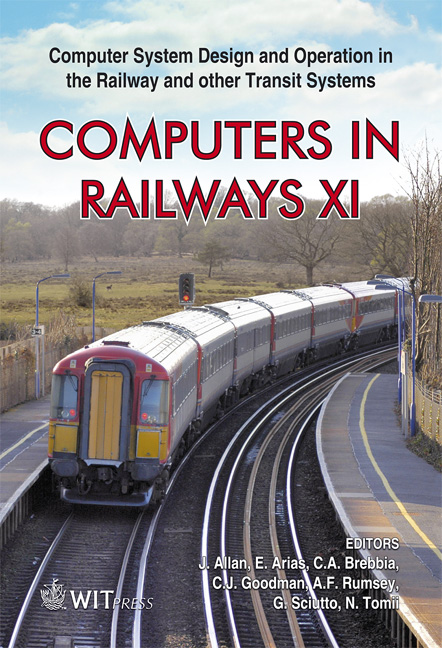Computer-aided Design Of ATO Speed Commands According To Energy Consumption Criteria
Price
Free (open access)
Transaction
Volume
103
Pages
10
Page Range
183 - 192
Published
2008
Size
484 kb
Paper DOI
10.2495/CR080191
Copyright
WIT Press
Author(s)
M. Domínguez, A. Fernández, A. P. Cucala & L. P. Cayuela
Abstract
Traffic regulation systems of metro lines equipped with Automatic Train Operation (ATO) use a set of pre-programmed speed commands selecting coasting points and brake deceleration. Different speed commands provides different travel times between stations and the regulation system on-line selects and sends to the train one of these commands. Nowadays, speed commands are designed based on time and comfort criteria. In this paper a new approach of speed commands design, which takes into account not only present operational criteria but also energetic ones, is proposed in order to obtain energy efficient ATO commands. Firstly, the travel time and energy consumption of every command is calculated using a simulator that combines all the possible discrete values of the ATO configuration parameters. A set of systematic rules has been defined to include the consumption, operative and comfort criteria in the selection of the speed commands applying decision theory techniques. A software tool has been implemented for a computer-aided design of the speed commands. This tool includes a thorough simulation module of the train movement (ATO, motor and train dynamics), an automatic generator of every possible command and a graphical assistant for the speed commands selection according to the mentioned rules. The methodology described in this paper has been used to redesign the current ATO commands (4 for each station) of Line 1 of Madrid Underground. The results are presented in this paper. According to the simulation results, about 10% of energy savings are expected to be achieved with these new speed commands. Keywords: energy consumption, speed commands design, train simulation.
Keywords
energy consumption, speed commands design, train simulation.





